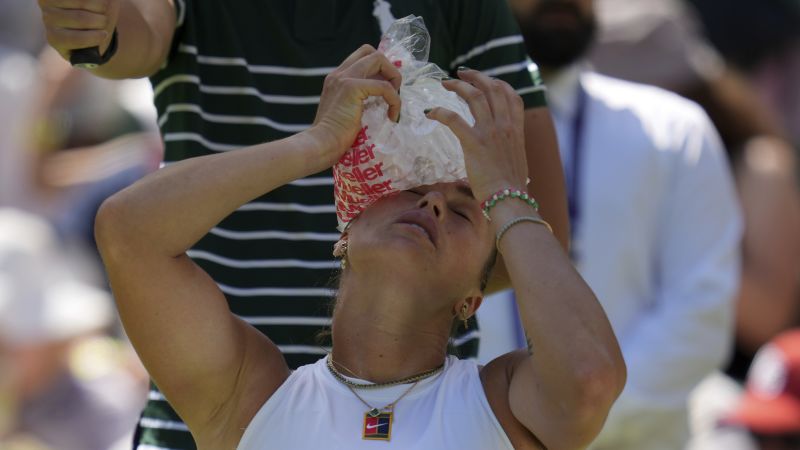
Wimbledon’s Scorching Start: Record Heat Challenges Players and Fans Alike
Wimbledon 2025 opened with unprecedented heat, breaking the previous record for the warmest opening day in the tournament’s history. Temperatures soared past 30°C (86°F), creating sauna-like conditions that challenged both players and spectators, forcing adaptations and highlighting the impact of extreme weather on sporting events.
Record-Breaking Heat: A Historic Opening Day
The All England Club confirmed that Monday’s opening day surpassed the previous record of 29.3°C (84.7°F) set in 2001, reaching a sweltering 32.3°C (90.1°F). This extreme heat, confirmed by Meteo France, impacted every aspect of the tournament, from the players on the court to the spectators in the stands. The high temperatures and humidity created challenging conditions for everyone involved. The heat was a major talking point, dominating conversations among players and fans alike.
Players’ Strategies: Coping with Extreme Conditions
Players employed various strategies to cope with the intense heat. Ice towels were used frequently to cool down between points and sets. The Wimbledon heat rule, activated when temperatures reach or exceed 30.1°C (86.2°F), allowed players to request a 10-minute break to rehydrate and recover. However, even with these breaks, players faced significant physiological stress, including impaired physical endurance and cognitive function. Some players like Frances Tiafoe changed their shirts multiple times, highlighting the impact of sweat on performance. Others focused on hydration strategies, including increased electrolyte intake.
Spectator Experience: Battling the Heat
Spectators also faced significant challenges. Many sought shade under hats and umbrellas, while others used hand-held fans to stay cool. The long queues to enter the grounds, coupled with limited shade in many areas, made the experience particularly difficult for some. The heat led to some spectators requiring medical attention, including an incident that briefly delayed Carlos Alcaraz’s match. The extreme conditions highlighted the need for adequate shade and hydration stations throughout the venue.
Expert Commentary: Physiological Impact of Extreme Heat
Chris Tyler, a reader in environmental physiology at the University of Roehampton, warned about the significant physiological impact of high heat on players. He emphasized the risks of dizziness, fainting, and poor decision-making without effective cooling strategies. The extreme heat can impair both physical endurance and cognitive function, potentially affecting match quality and player safety. The experts’ comments underscored the seriousness of the situation and the need to prioritize player wellbeing.
International Comparisons: Wimbledon’s Unique Challenge
While many players have experience playing in hot conditions at tournaments like the Australian Open and US Open, Wimbledon’s typically milder climate made this year’s heatwave particularly challenging. The combination of high temperatures, humidity, and the intensity of the competition placed unique demands on players. The extreme heat highlighted the adaptability required to compete at the highest level of professional tennis.
Looking Ahead: Weather Forecasts and Future Implications
Temperatures are expected to cool down later in the week, but the extreme heat of the opening day has raised questions about the future impact of climate change on sporting events. The incident serves as a reminder of the potential challenges posed by extreme weather and the need for effective strategies to mitigate these risks for both players and spectators. The event’s organizers will likely need to consider measures to improve shade and cooling provisions for future tournaments.
Key Takeaways:
- Wimbledon 2025 opened with record-breaking heat, surpassing previous opening-day highs.
- Extreme heat significantly challenged players and spectators, necessitating various coping strategies.
- The Wimbledon heat rule was implemented, but players still faced physiological stress.
- Experts highlighted the potential health risks associated with extreme heat in sporting events.
- The heatwave underscores the need for improved infrastructure and safety protocols at future tournaments.
